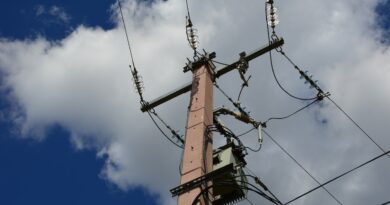Safety Mastery: Unleashing the Power of Electrical Safety Audits in Bhiwadi
Introduction
Electrical safety is of paramount importance in any industrial or commercial setting. In Bhiwadi, a growing industrial hub, ensuring the safety of electrical systems and equipment is crucial to prevent accidents and protect both employees and assets. One of the most effective ways to assess and improve electrical safety is through conducting regular safety audits. This article will delve into the power of electrical safety audits in Bhiwadi and explore their significance in maintaining a safe working environment.
Understanding Electrical Safety Audits
An electrical safety audit is a comprehensive assessment of an organization’s electrical systems, equipment, and practices to identify potential hazards, non-compliance with safety standards, and areas for improvement. It involves a systematic review of electrical installations, wiring, grounding, protection devices, maintenance procedures, and safety protocols. The audit is usually conducted by trained professionals who have expertise in electrical safety regulations and best practices.
Importance of Electrical Safety Audits
Electrical safety audits play a vital role in ensuring the well-being of workers, preventing accidents, and mitigating potential risks. Here are some key reasons why conducting electrical safety audits is essential in Bhiwadi:
- Accident Prevention: Electrical safety audits help identify potential hazards such as faulty wiring, inadequate grounding, or outdated equipment that could lead to electrical accidents, fires, or electrocution. By addressing these issues promptly, audits help prevent accidents and injuries.
- Compliance with Regulations: Bhiwadi, like any other industrial area, has specific electrical safety regulations and codes that organizations must adhere to. Regular audits ensure compliance with these regulations, minimizing legal risks and penalties.
- Risk Mitigation: By proactively identifying and addressing electrical hazards, safety audits help mitigate risks associated with electrical failures, system malfunctions, and potential workplace accidents. This contributes to overall risk reduction and business continuity.
- Improving Work Environment: Conducting regular electrical safety audits fosters a culture of safety within the organization. It demonstrates a commitment to employee well-being and creates a positive work environment, leading to increased morale and productivity.
Benefits of Conducting Electrical Safety Audits in Bhiwadi
In Bhiwadi, conducting electrical safety audits brings forth numerous benefits for organizations. Some of these benefits include:
- Enhanced Safety: By identifying and rectifying potential electrical hazards, audits significantly enhance the overall safety of the workplace. This leads to fewer accidents, reduced downtime, and improved employee well-being.
- Operational Efficiency: Electrical safety audits help identify inefficiencies and gaps in electrical systems, enabling organizations to optimize their operations. By addressing issues such as energy wastage or equipment malfunctions, audits contribute to improved efficiency and cost savings.
- Legal Compliance: Compliance with electrical safety regulations is essential to avoid legal consequences and ensure a safe working environment. Audits assist organizations in identifying non-compliance issues and taking corrective actions promptly.
- Protection of Assets: Electrical safety audits help protect valuable assets by preventing electrical fires, equipment damage, and system failures. By maintaining a safe electrical infrastructure, organizations can safeguard their investments and avoid costly repairs or replacements.
Key Components of an Electrical Safety Audit
A comprehensive electrical safety audit typically includes the following key components:
- Review of Documentation: The audit begins with a thorough examination of electrical system documentation, including plans, designs, maintenance records, and safety protocols.
- Visual Inspection: Trained auditors inspect electrical equipment, wiring, grounding systems, and protective devices for any signs of damage, wear, or non-compliance.
- Testing and Measurements: Various electrical tests, such as insulation resistance testing and earth resistance testing, are conducted to assess the performance and integrity of electrical installations.
- Safety Protocol Assessment: Auditors evaluate the organization’s safety procedures, including lockout/tagout practices, personal protective equipment usage, and emergency response plans.
- Documentation of Findings: The audit findings, including identified hazards, recommendations, and non-compliance issues, are documented in a comprehensive report.
Conducting an Effective Electrical Safety Audit
To ensure the effectiveness of an electrical safety audit, organizations should follow these steps:
- Establish Clear Objectives: Define the specific goals and scope of the audit, considering the size of the facility, the nature of operations, and regulatory requirements.
- Engage Qualified Auditors: Hire experienced professionals with expertise in electrical safety regulations and audit methodologies to conduct the assessment.
- Pre-Audit Preparation: Gather all relevant documentation, organize maintenance records, and ensure auditors have access to necessary areas and equipment.
- Thorough Inspection: Allow auditors sufficient time to conduct a detailed examination of electrical systems, equipment, and safety practices, ensuring nothing is overlooked.
- Collaborative Approach: Encourage open communication between auditors, management, and employees to address any concerns or questions during the audit process.
- Comprehensive Reporting: Generate a comprehensive audit report that highlights findings, recommendations, and an action plan to address identified issues.
Implementing Recommendations from an Audit
The true value of an electrical safety audit lies in implementing the recommended improvements. After receiving the audit report, organizations should:
- Prioritize Actions: Prioritize the identified recommendations based on their potential impact on safety, compliance, and operational efficiency.
- Allocate Resources: Allocate necessary resources, including budget, manpower, and time, to address the identified issues and implement the recommended improvements.
- Develop an Action Plan: Create a detailed action plan that outlines specific tasks, responsibilities, timelines, and milestones for each recommendation.
- Training and Education: Provide necessary training and education to employees to ensure they understand the importance of electrical safety and adhere to best practices.
- Monitor and Review: Continuously monitor the effectiveness of implemented measures, review progress, and make adjustments as needed to maintain electrical safety standards.
Training and Education for Electrical Safety
Training and education play a crucial role in promoting electrical safety awareness and preventing accidents. Organizations should:
- Provide Initial Training: Ensure all employees receive initial training on electrical safety practices, including the basics of electrical hazards, safe work practices, and emergency response protocols.
- Periodic Refresher Training: Conduct regular refresher training sessions to reinforce safety protocols, address emerging risks, and update employees on new regulations or technologies.
- Specialized Training: Equip maintenance personnel, electricians, and other relevant staff with specialized training on handling electrical equipment, troubleshooting, and performing maintenance tasks safely.
-
- Promote Safety Culture: Foster a culture of safety by encouraging employees to actively participate in safety programs, reporting potential hazards, and suggesting improvements.
- Safety Awareness Campaigns: Conduct safety awareness campaigns, such as workshops, posters, and newsletters, to keep employees informed about electrical safety best practices and raise awareness of potential hazards.
- Engage External Experts: Collaborate with external experts or consultants to provide specialized training or workshops on specific electrical safety topics, such as arc flash prevention or electrical equipment maintenance.
Compliance with Electrical Safety Standards
In Bhiwadi, organizations must adhere to specific electrical safety standards to ensure a safe working environment. Compliance with these standards includes:
- National Electrical Code (NEC): Adhere to the NEC guidelines, which provide comprehensive safety regulations for electrical installations, equipment, and wiring practices.
- Indian Electricity Rules: Comply with the Indian Electricity Rules, which outline safety measures for electrical installations, maintenance, and operation.
- Electrical Safety Standards: Stay updated with relevant electrical safety standards, such as those set by the Bureau of Indian Standards (BIS) or the International Electrotechnical Commission (IEC), and incorporate them into safety practices.
The Role of Technology in Electrical Safety Audits
Technology plays a significant role in enhancing the effectiveness and efficiency of electrical safety audits in Bhiwadi. Some key technological advancements that contribute to electrical safety include:
- Thermal Imaging Cameras: These cameras detect hotspots in electrical equipment, helping identify potential failures or overloaded circuits.
- Power Quality Analyzers: Power quality analyzers monitor voltage fluctuations, harmonics, and other electrical parameters to ensure the stable and safe operation of electrical systems.
- Wireless Monitoring Systems: These systems provide real-time monitoring of electrical parameters, allowing for immediate detection of abnormalities or potential risks.
- Digital Documentation and Reporting: Using digital platforms and software, auditors can create detailed reports, track audit findings, and store historical data for future reference.
Best Practices for Maintaining Electrical Safety
To maintain electrical safety in Bhiwadi, organizations should follow these best practices:
- Regular Maintenance: Implement a robust maintenance program to ensure the regular inspection, testing, and servicing of electrical systems, equipment, and protective devices.
- Proper Labeling: Clearly label electrical panels, circuits, and equipment to facilitate identification and enhance safety during troubleshooting or maintenance.
- Effective Grounding and Bonding: Implement proper grounding and bonding techniques to prevent electrical shocks, limit voltage fluctuations, and protect against lightning strikes.
- Arc Flash Hazard Mitigation: Assess the risk of arc flash incidents and implement preventive measures such as proper personal protective equipment (PPE), arc flash studies, and equipment labeling.
- Emergency Preparedness: Develop and communicate emergency response plans, including evacuation procedures, shutdown protocols, and contact information for emergency services.
Case Studies: Successful Electrical Safety Audits in Bhiwadi
Several organizations in Bhiwadi have experienced the benefits of conducting electrical safety audits. Here are two notable case studies:
- ABC Manufacturing: By conducting regular electrical safety audits and implementing recommended improvements, ABC Manufacturing achieved a 30% reduction in electrical accidents and a significant decrease in equipment downtime.
- XYZ Industries: After a comprehensive electrical safety audit, XYZ Industries updated their electrical systems, trained employees on safety practices, and experienced a 25% increase in operational efficiency and a notable reduction in electricity consumption.
Challenges and Solutions in Electrical Safety Audits
While conducting electrical safety audits, organizations may encounter challenges such as:
- Limited Resources: Limited budget, manpower, or time can hinder the implementation of audit recommendations. Solutions include prioritizing critical issues, seeking external funding, or allocating resources strategically.
- Resistance to Change: Employees may resist changes recommended during audits. To overcome this, organizations should focus on effective communication, provide training, and involve employees in the decision-making process.
- Lack of Expertise: Organizations may lack in-house expertise to conduct thorough audits. Partnering with external safety professionals or investing in training internal staff can address this challenge.
Continuous Improvement in Electrical Safety
Electrical safety is an ongoing process that requires continuous improvement. Organizations should:
- Regular Audits: Conduct periodic electrical safety audits to identify evolving risks, ensure compliance, and make necessary improvements.
- Feedback and Evaluation: Encourage feedback from employees, auditors, and other stakeholders to identify areas for improvement and evaluate the effectiveness of safety measures.
- Benchmarking and Industry Standards: Stay updated with industry best practices, benchmark against other organizations, and continuously strive for excellence in electrical safety.
Conclusion
In Bhiwadi, electrical safety audits are instrumental in maintaining a safe working environment, preventing accidents, and ensuring compliance with regulations. By proactively identifying electrical hazards, implementing recommendations, and fostering a culture of safety, organizations can unleash the power of electrical safety audits to protect their employees, assets, and reputation.




